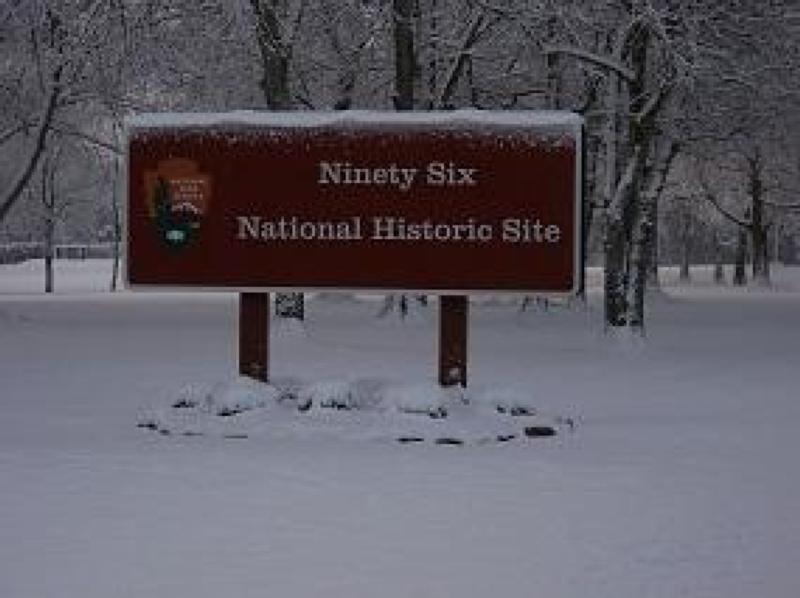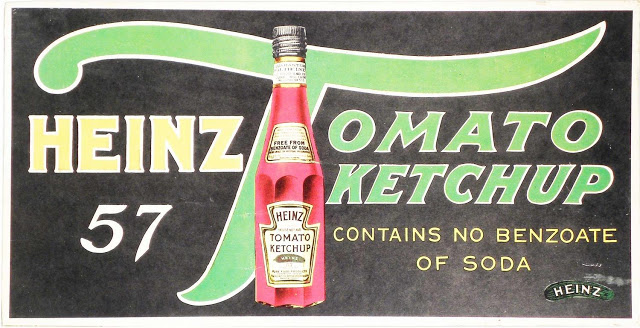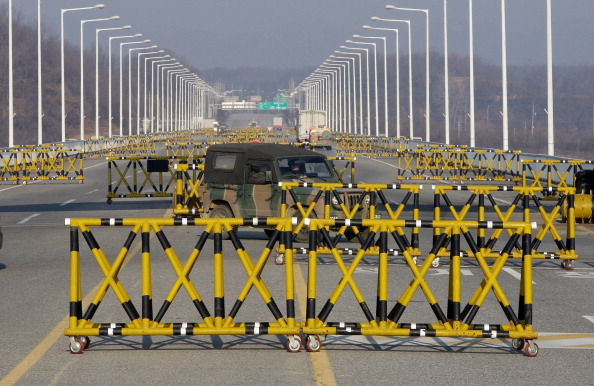5.城镇的命名
Naming a town seems like a pretty straightforward thing. In America, they're mainly named after people, local landmarks, or other towns. So if someone tells you it's called New York because people just liked it better that way, you can correct them and say it was named for the eventual King James II of England, then known as the Duke of York and Albany.
给城镇命名听上去似乎很简单。美国的城镇一般以人物、地标或其他城镇的名字为名,所以如果有人跟你说纽约之所以叫纽约,只是因为人们喜欢这么叫时,你就可以纠正并告诉他,纽约的叫法其实包含了对当时的约克和奥尔巴尼公爵、英王詹姆斯二世的尊敬。

But what about towns named for numbers? One such town came to public attention via the national pastime. Bill Voiselle was a major league baseball pitcher during the 1940s. Today, he's best remembered for his uniform number—at a time when everyone wore low numbers, Voisselle wore #96. His reasoning was pretty simple: he was from the town of Ninety Six, South Carolina. Ninety Six got its unusual name from a simple quirk of cartography. In 1730, surveyor George Hunter marked the area as being 96 miles from the Cherokee town of Keowee. The number made it onto the maps, and the name has stuck around ever since.The national building supply chain 84 Lumber got its name in a similar way—the company was founded in the town of Eighty Four, Pennsylvania. Like most number-based towns, there are all sorts of crazy stories about how Eighty Four came to be named, but the most likely story is actually quite simple. The small rural community wanted the name Smithville for their postal route. That name was already taken in eastern Pennsylvania, so postmaster H.F. Weir asked for the route to be named after the year the post office was built: 1884. A slightly abbreviated version ended up becoming the town's official name.
那么,以数字为名的城镇又有什么说法呢?比尔·维斯乐是20世纪40年代棒球大联盟的一名投手,他因自己的球衣号码为人所熟知,那个时候,大家的球衣号码都是小数字,而维斯乐球衣背后的号码是大数字96。他说选这个数字的原因很简单:他来自南卡罗来纳的九十六小城,这个小城因制图时的一个小失误而得名96。1730年,测量员乔治·亨特一时疏忽把这个小城距切罗基原住民居住地的距离标到了地图上,自那之后,这个小城就成了96小城。84木材是一家连锁国家建材供应商,跟96小城一样,它的命名也是源自公司所在的地区:宾夕法尼亚州的84小城。大多以数字命名的小城都有着各种各样的稀奇传说,84小城也不例外,不过,它的来历相对比较简单。起初,这个小城想以Smithville来命名其邮递路线,但那个名字已经被宾夕法尼亚州东部的一个小城用了,于是邮政局长 H.F. Weir征求大家意见,建议用邮局所建年份1884做名字,最后,大家选择了年份的后两位数作为小城的官方名称。
4.亨氏57变

The Heinz Company is known for making condiments—so many of them that the company famously adopted the advertising slogan "57 Varieties." The company was founded in 1869 and has prospered ever since, although it took a bit of a tumble when John Kerry ran for President in 2004. Since Kerry was married to Teresa Heinz, the widow of company Heir John Heinz III, some Republicans claimed that purchasing Heinz products was "like giving to the Democrats." Unsurprisingly, Heinz survived this backlash and continues to produce well over 57 products.
亨氏集团以其调味品著称,很多调味品都采用了"57变"的广告语。亨氏集团自1869年成立以来生意一直很好,只是2004年约翰·克里竞选总统时业绩有些下滑,因为克里娶了亨氏集团继承人约翰·海茵茨三世的遗孀特丽莎·海茵茨,所以一些共和党人认为购买亨氏集团的产品"就像在给民主党投票"。不过,亨氏集团最终还是熬过了这次抵制行动,继续生产了57种产品。
So why is the number 57 associated with Heinz? It all started in 1896, when company founder Henry Heinz was on a train in New York City and passed a sign advertising 21 different styles of shoes. Heinz thought that was brilliant—it made the company seem complex and diversified and appealed to many different tastes in shoes. By that point, his company already had well over 60 products available, but Heinz decided 57 worked better. Some sources say he considered 57 his lucky number, others claim that his lucky number was five, and his wife's was seven. Or maybe he just liked how it sounded. Regardless, the number 57 doesn't actually refer to 57 specific varieties of anything—it's just a catchy marketing device.
为什么57会跟海茵茨扯上关系呢?这要追溯到1896年,那一年,亨氏集团创始人亨利·海茵茨在纽约市的火车上,正巧看到路边一则广告上展示着21种不同风格的鞋子。海茵茨心想,这个广告主意不错,能展现出公司鞋子产品的多样化并吸引不同需求的消费者购买。那个时候,他的公司已经生产了60余种产品,但是海茵茨觉得57更好。有传言说57是海茵茨的幸运数字;还有人说5是他的幸运数字,7是他妻子的幸运数字;也或者他就仅仅是喜欢57的发音呢。不管怎么说,虽然是选择了57,但这并不是指代57种特定的调味品,而是吸引市场眼球的一个手段。
3.600万犹太人

There are some numbers that shouldn't be questioned, yet Holocaust denial has been around since the 1950s, when the influential American priest Gerald L. K. Smith claimed that no Jews had been killed by the Nazis—they had all secretly emigrated to America instead. Former Iranian President Mahmoud Ahmadinejad is still telling anyone who can stand to hear him talk that the Holocaust is a myth, while others content themselves with claiming that the six million Jews estimated to have been killed is an exaggeration.
有些数字不容人们质疑,可是自20世纪50年代起,否认大屠杀的事就一直未平息。美国一位很有影响力的牧师 Gerald L. K. Smith声称,纳粹不曾杀害过一个犹太人,相反,犹太人都被秘密安全转移到美国了。前伊朗总统马哈茂德·艾哈迈迪-内贾德仍然大言不惭的跟那些能忍着听完他讲话的人说纳粹德国对犹太人的大屠杀是一个迷;还有一些人则安慰自己说600百万犹太人被杀害有些夸大其词。
But six million isn't just a random guess—it's well documented. The Nazis kept detailed records of their atrocities, including how many Jews were moved to concentration camps or killed by roving death squads. Adolf Eichmann, as responsible as anyone for planning the Holocaust, was confident that a bit over five million Jews had been killed. Historians have done extensive work to determine the exact number—including those who never even made it to Eichmann's camps. For example, SS records confirm at least 7,000 died during the fighting of the 1943 Warsaw Ghetto Uprising. After meticulously scouring the records, the historian Lucy Dawidowicz put the total number killed at 5.93 million. Other historians have reached similar figures. The fact that these figures derive from German bureaucratic records should be enough to blow a hole in any Holocaust denier's theories. There was a Holocaust, it was real, and the Nazis are the ones who said so.
但是600万这个数字并不是随意的猜想,而是有文件记载的。纳粹党人保留了他们暴行的详细记录,包括有多少犹太人被运往集中营,有多少人死于敢死队。在犹太人大屠杀中执行"最终方案"的主要负责者纳粹战犯阿道夫·艾希曼承认有500多万犹太人被杀害。历史学家做了大量工作以获得确切数字,想知道那些都没能到集中营就丧命的人数。就如,根据SS党卫军的记录,单在1943年华沙犹太人隔离区起义中,就有至少7000名犹太人被杀害。经过细致调查和统计,历史学家Lucy Dawidowicz指出,被迫害的犹太人有593万,其他历史学家的统计也跟这个计算结果相近。这些根据德国官方记录而得出的受害人数足以抨击否认大屠杀的人的阴谋论。大屠杀真实存在,迫害方纳粹党就是这场残暴屠杀的见证者。
2.三八线

The 38th parallel is a circle of latitude that served as the initial basis for the famous demilitarized zone (DMZ) between North and South Korea—the most heavily fortified border in the world. The DMZ traces its origins to World War II. As US forces landed in the south of Korea and the Soviet Red Army overran the Japanese forces in the north, there needed to be a line where the two armies could meet without overlapping (and possibly ending up fighting each other). The 38th parallel was chosen. But why?
三八线是一条用以划分南北朝鲜之间受降范围的暂时军事分界线,是世界上防卫最森严的一条边界线。其历史要追溯到第二次世界大战,那时,美国武力登陆朝鲜南部,苏联红军将日本军力控制在北部,所以需要有一条分界线来划分两国部队控制的受降区,以免两国军队见面打起来。于是,就选择了三八线,为什么呢?
It turns out that the line had no real historical significance. Prior to the Allied invasion, Korea functioned as a whole pretty well. It was the Soviets and Americans who decided to split the nation. Dean Rusk, a member of General George Marshall's staff (and a future Secretary of State), looked over a National Geographic map with Army Colonel Charles "Tic" Bonesteel. The pair were determined that Seoul should be in the American zone, but they couldn't find a natural break north of the city. They eventually settled for the 38th parallel, around 56 kilometers (35 mi) north of Seoul. The Soviets agreed to the entirely arbitrary dividing line and the rest is (war-torn) history.
事实证明这条分界线的确立并没有什么历史性的意义。盟军入侵之前,朝鲜还是个完整的国家,是苏联和美国硬生生把这个国家一分为二。乔治·马歇尔将军的一位年轻参谋迪安·拉斯克上校(Dean Rusk,后来担任美国国务卿)和陆军军官查尔斯·邦斯迪尔审视了国家地图后,认为首尔应该归在美国受降区,但是他们没能在这个城市的北部找到一个自然分界线。于是最后选择了距首尔北部大约56,000米,位于北纬38度附近的一条线。苏联对这个随意划分的分界线也表示同意,三八线就这么形成了。
1.Letterman's Top 10 lists
1.莱特曼的前10榜

Everyone loves lists. There are even websites based on the idea. But the idea behind a Top 10 list didn't originate in the Internet age—magazines have been doing them for decades. But nothing helped popularize Top 10 lists as much as Late Night with David Letterman.
每个人都喜欢榜单,有很多网站也是基于排名而设立。不过,前十排行这个主意可不是缘起于互联网时代,杂志媒介已经采用这种形式数十年了。但要说让前十榜单这一形式红起来的,那还要属午夜聊天节目《大卫深夜脱口秀》。
In its early days, Letterman was known for being edgier than other talk shows—since it was on later in the evening, it had more leeway to get away with silly stunts. Writer Randy Cohen has often been given credit for the idea of doing a humorous Top 10 list, but Cohen himself says it was more of a team effort. Which is good, because it seems like everyone who worked for Letterman except Letterman himself thinks they came up with the idea as a spoof of other Top 10 lists. The direct inspiration was likely a Cosmopolitan list of the 10 sexiest men over 60. The first list, written by Kevin Curran, was the Top 10 Words That Almost Rhyme With "Peas." But what about Listverse? Well, our very first list was published way back in 2007. And while Listverse didn't always follow the 10-item format, it works well, as history has shown us.
早期时候,这档脱口秀以其生动犀利的语言而闻名,因为节目是在午夜播出,所以可以尽情嬉笑怒骂,将娱乐精神展现的淋漓尽致。人们常常将前十排行这一创意归功于写手兰迪·科恩,不过科恩自己说这更多的是团队协作的成果。这样想也好,因为这样一来,似乎除了主持人莱特曼以外,每个为这档脱口秀工作的人都可以把自己算作创造前十榜单笑料的一员。前十排行的直接灵感来源于Cosmopolitan的"十大60岁以上的最性感大叔"榜单。《大卫深夜脱口秀》中的第一份前十排行榜是凯文·库然写的"十大跟peas(豌豆)押韵的词语"。
















